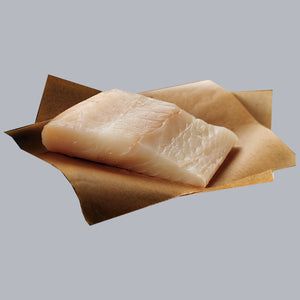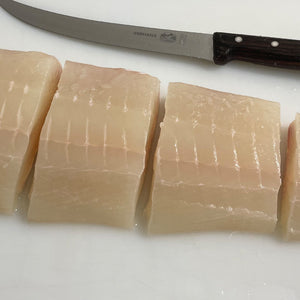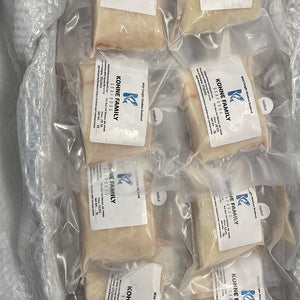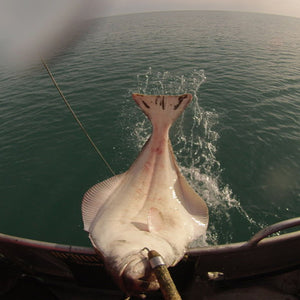Alaskan Halibut
$259.99
| /
Alaskan Halibut is a type of flatfish found in the cold, deep waters of the North Pacific Ocean, particularly off the coast of Alaska. It is highly prized for its mild flavor, firm texture, and versatility in cooking. Here are some key details about Alaskan halibut:
1. Physical Characteristics
- Size: Halibut can grow quite large, with some reaching over 8 feet in length and weighing up to 500 pounds, though most harvested halibut are smaller, typically around 30-40 pounds.
- Appearance: Alaskan halibut has a flat, diamond-shaped body with both eyes on the same side (the top side), while the underside is white. The top side is usually a dark brown or greenish color for camouflage.
2. Habitat
- Alaskan halibut thrive in the cold waters of the North Pacific, especially in the Bering Sea and Gulf of Alaska. They live at depths ranging from 30 to 1,200 feet, and are typically found on the ocean floor.
3. Culinary Use
- Flavor and Texture: Halibut has a mild, slightly sweet flavor and a firm, flaky texture, making it a versatile fish for a variety of cooking methods, including grilling, baking, broiling, sautéing, and frying.
- Popular Dishes: It is often served as steaks, fillets, or even used in fish tacos, soups, and chowders.
4. Health Benefits
- As mentioned previously, Alaskan halibut is an excellent source of high-quality protein, omega-3 fatty acids, vitamins (like B12, D, and A), and important minerals like selenium and magnesium. It's a low-fat, heart-healthy food that offers a variety of nutritional benefits.
-
3.0oz of Alaska Halibut contains
- 19g Protein (38% DV)
- 201mg Omega 3s DHA & EPA
- 5.0 mcg Vitamin D (33% DV)
- 47mcg Selenium (85% DV)
5. Sustainability
- Alaskan halibut is considered a sustainable fish choice when caught in accordance with responsible fishing practices. The Alaska Halibut Fishery is managed by the North Pacific Fishery Management Council and follows strict regulations to ensure sustainable harvesting and prevent overfishing. Halibut stocks are closely monitored to maintain a healthy population.
6. Fishing Seasons
- Alaskan halibut is primarily caught during the spring and summer months, with the peak of the fishing season usually running from March to November. The fishery is subject to annual quotas to ensure the sustainability of the population.
7. Conservation Efforts
- The Alaskan Halibut Fishery follows a catch limit system and employs methods such as individual fishing quotas (IFQs) and catch shares to balance conservation and the needs of the fishing industry. These methods help to prevent overfishing and allow the fish population to remain stable.
8. Price and Availability
- Alaskan halibut is often considered a premium fish due to its size, flavor, and nutritional profile. Prices can vary based on availability, size, and whether the fish is fresh or frozen.
9. Cooking Tips
- Due to its firm texture, Alaskan halibut is ideal for grilling or pan-searing. It holds its shape well when cooked and can be paired with a variety of seasonings, sauces, and sides.
- Baking Tip: When baking halibut, a common method is to wrap it in foil with herbs, butter, and lemon for a flavorful, moist result.
In summary, Alaskan halibut is not only a delicious and versatile fish but also a nutritious, sustainable, and responsibly managed resource, making it an excellent choice for both health-conscious eaters and environmentally-minded consumers.







